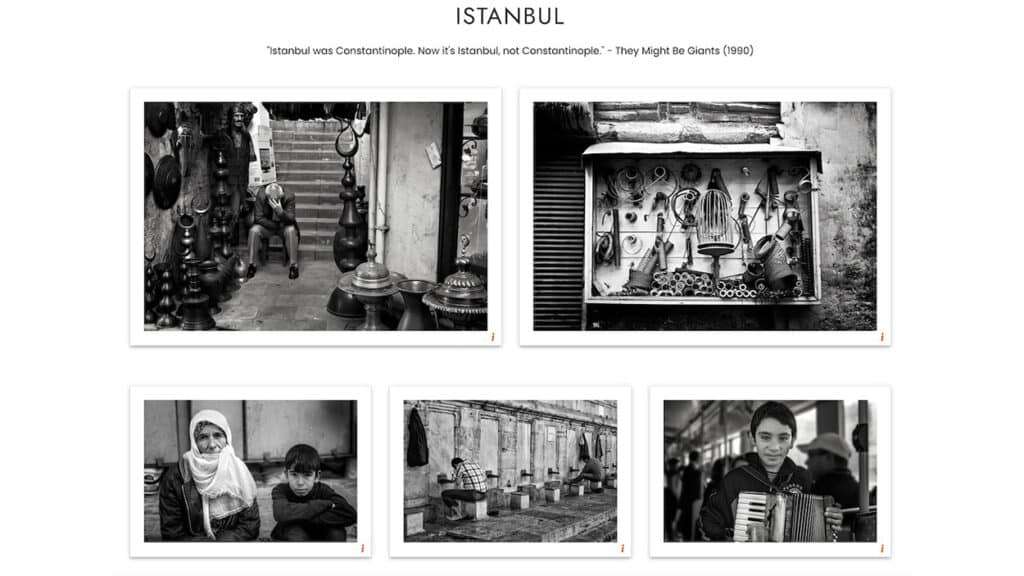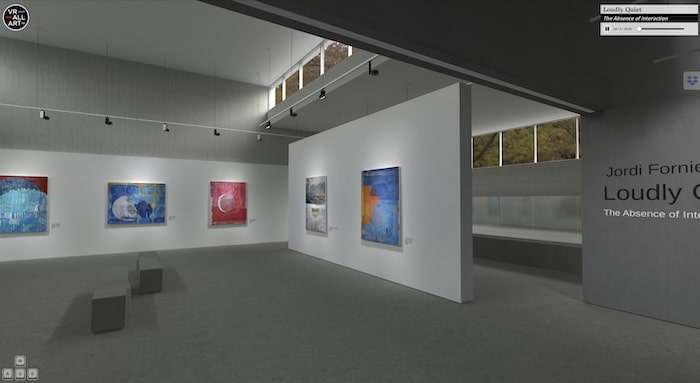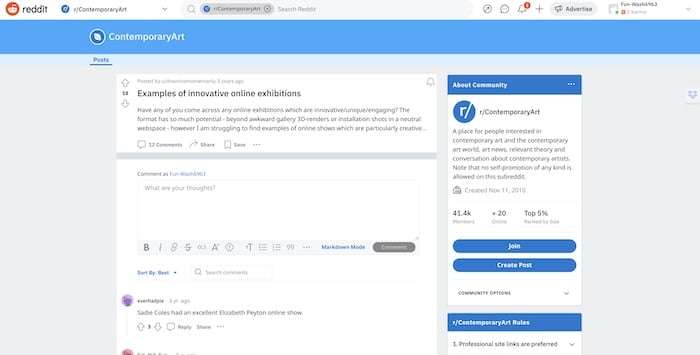In this series, we have progressed through the detailed process of building a robust online profile, a critical aspect in the modern art landscape dominated by digital platforms. We are about to venture into a domain that has transformed how art is viewed and appreciated – virtual art exhibitions.
As digital engagement becomes a standard practice, virtual art exhibitions are turning into a vital component of an artist’s online toolkit. These platforms extend beyond the traditional artist’s portfolio, marking a significant shift by fostering deeper, immersive interactions with global audiences.
In this installment, we will guide you through the strategic planning and implementation necessary for establishing a virtual art exhibition, an initiative that aims to enhance your online profile significantly. From choosing the appropriate platform to designing a layout that aligns with your artistic narrative, we outline the steps to creating an exhibition that displays your art and expands your presence in the global art community.
Join us as we explore this vibrant aspect of the digital art domain, providing you with insights and tactics to strengthen your position in a competitive, constantly changing environment.
The Rise of Virtual Art Exhibitions
Art exhibitions have a rich history, serving as a platform for artists to showcase their work and for art enthusiasts to appreciate the creativity and skill on display. While the traditional physical gallery space remains an excellent opportunity to sell work, obtaining that coveted gallery representation is tough and unavailable to most artists. Even for artists who show their work in a physical gallery setting, only a few of their creations will ever make it to the gallery walls. Plus the geographic limitations of reaching a wide audience, as well as the short time that an exhibition is available for viewing, means that the vast majority of physical art is rarely available for view by the public.
The shift to virtual platforms has worsened the problem by cannibalizing sales from traditional galleries and further reducing the number of people attending physical exhibitions. On the other hand, these platforms have opened up new avenues for every type of artist, from hobbyists to most sought-after creators, to reach a wider audience, break geographical barriers, and allow for a more inclusive and accessible art experience.
Even more critically, artists can easily share insights into their creative process and can captivate their audience with the stories of their work, making them more attractive to potential buyers.
While we won’t dwell on the features and benefits of the various online platforms, which one you choose can significantly influence the success of a virtual exhibition. To ensure that the platform meets your particular needs, you should conduct thorough research to find one that aligns with
Showcasing Art Effectively in a Virtual Space: Planning and Preparation
Embarking on the journey to organize your virtual exhibitions is thrilling but requires some planning and preparation. The first step is to carve out themes that bind your works into unified groups, each group potentially being its own exhibition. As you curate your artwork, ensure that each piece aligns with the theme and adds a rich layer to the exhibition’s overarching narrative.

Carve out themes that bind your works into unified groups.
You can use the same methodical approach to selecting works for your exhibitions as we discussed in How To Skyrocket Your Artist Reputation With A Riveting Digital Art Portfolio. In some cases, your virtual art exhibition may use the same site functionality as creating portfolios for your exhibitions.
Selecting the Right Platform
Since not every online artist platform has the functionality and features necessary for presenting works as a virtual exhibition, selecting one that will fit your needs is imperative.
Visual Layouts. First, make sure that the available layouts complement the style and theme of your work. How the exhibition looks on screen can entice the viewer to look more closely at the individual works and potentially generate a sale. On the other hand, if the initial view of your exhibition has a layout that feels clunky and outdated, it could result in the viewer moving on to another site or, even worse, negatively impact how your work is perceived, which may persist even if you change the platform to one with a more modern and visually appealing layout.
Interactivity. Ideally, the platform you choose should support features that allow viewers to interact with the artworks, such as zoom-in options so the viewer can appreciate the finer details. You can enhance the visual experience even further by using augmented reality (AR) or virtual reality (VR) platforms that allow the user to view your work through a 3D model of a physical space.

Sites like vrallart.com allow you to take a virtual walk through a 3D gallery space and buy the presented works
Multimedia Capabilities. The platform should include multimedia elements, such as videos and audio descriptions, which can provide rich context and background to each piece. For example, artist interviews or behind-the-scenes footage can add depth to the exhibition and provide viewers with insights into your creative process.
Additional Images. Potential buyers may want to see intricate details of the artwork before purchasing online, such as brush strokes, how the canvas pattern shows through, or how grainy a photo might be. While it is important to use high-resolution images to show work at its finest, you don’t want to provide full-scale images that can be stolen and printed by anyone with access to the file. A workaround is to provide a print-ready image of only a piece of the work. You can also add additional images to show how the works might look in various rooms or frames. These secondary images can also show various angles for three-dimensional works like sculptures, providing a comprehensive view of the piece.
The ultimate goal is to select a platform that not only showcases your art in the best light but also fosters a deep and meaningful engagement between the viewer and the artwork, encouraging them to explore and appreciate the nuances of your artistry.
Promotion and Engagement
Promoting a virtual art exhibition demands a nuanced and innovative approach. Artists must delve into the realm of digital marketing with a keen eye, identifying unique avenues to spotlight their virtual art exhibition effectively. The goal is to craft a promotional campaign that captivates potential buyers and art enthusiasts alike, encouraging them to immerse themselves in the virtual gallery experience.
Moreover, the promotion should be designed to reach an audience that appreciates the depth and essence of the presented art. Utilizing digital tools and platforms adeptly is vital to carve out a distinct space in the crowded online art sphere. In the forthcoming discourse, we will explore detailed tactics artists can employ to make their virtual art exhibition successful.
Craft a Press Release.. Creating a compelling press release begins with crafting a headline that immediately grabs attention, succinctly encapsulating the essence of your virtual art exhibition. The introductory paragraph should succinctly present your exhibition’s who, what, when, where, and why. Follow this with a paragraph that delves into the story behind the exhibition, perhaps highlighting the featured artists’ journey or the collection’s thematic significance. Remember to incorporate quotes from notable figures in the art world or artists to add credibility and depth to your release.
Once your press release is finely tuned, the next step is to distribute it to a broader audience. Start by identifying the key media outlets and journalists who focus on the art sector. You can find these contacts through a bit of research on platforms like LinkedIn or by exploring articles and blogs in your niche. Additionally, consider leveraging online press release distribution services that can disseminate your news to a broader network of media outlets. Don’t overlook the power of your existing network; share your press release with peers, mentors, and followers through social media and email newsletters, encouraging them to spread the word further. Remember, the goal is to create a ripple effect that amplifies the reach of your virtual art exhibition.

Use online communities, like Reddit, to promote your exhibitions.
Engage with Virtual Art Communities. Start by identifying forums and communities that align with your art style and thematic elements. Platforms such as DeviantArt, ArtStation, and the subreddit r/Art are excellent places to immerse yourself in. Engage actively in discussions, share snippets of your works, and perhaps even offer a behind-the-scenes glimpse into your preparation for the exhibition. Remember, the key here is genuine engagement; fostering organic relationships can lead to word-of-mouth promotion, which is incredibly valuable.
Advanced Social Media Tactics. To create a buzz quickly, leveraging your social media following or those of your artist friends can be highly beneficial. However, for those without large followings, you should try to leverage hashtags’ power to increase your posts’ visibility. Use sites like Hashtags for Likes to find hashtags with the highest reach. Consider running a limited-time contest or giveaway, where you ask your followers to share your posts or create content around your exhibition, incentivizing them with a chance to win a piece of art. This can create a ripple effect, potentially reaching a larger audience than initially anticipated. If these don’t prove effective, you can try boosting your posts to reach thousands of potential buyers.
Post-Exhibition Strategies. After the exhibition concludes, it’s time to evaluate its success and gather feedback from your audience. Analyze the data and metrics to understand the reach and impact of your exhibition. Use this information to refine your strategies for future exhibitions, identifying areas for improvement and opportunities to enhance the viewer’s experience.
Maintaining engagement with your audience post-exhibition is crucial. Continue to share content related to your art, offer insights into your creative process, and keep your audience updated on your upcoming projects. Building a loyal following takes time and consistent effort, but the rewards are well worth the investment.
Post-Exhibition Strategies
The work is far from over once the curtains close on your virtual exhibition. It’s a pivotal moment to gauge the success and areas where you can fine-tune for future endeavors. Begin by meticulously analyzing the data and metrics available from the platform you used for the exhibition. Focus on aspects such as the number of visitors, the time spent by each visitor on different artworks, and the overall traffic flow. This data can offer invaluable insights into your audience’s preferences and behaviors, helping you tailor future exhibitions more closely to their tastes.
Consider gathering qualitative feedback from your audience. You might set up a feedback form on your website or send out a survey to your mailing list, asking specific questions about their experience. Did they find the navigation easy? Were they able to connect with the art on display? Their responses can provide a more nuanced understanding of the exhibition’s impact, allowing you to make informed decisions for future projects.
_________
Every step is crucial in crafting a successful virtual exhibition, from meticulous planning and preparation to selecting the right platform and employing innovative promotional strategies. Moreover, the post-exhibition phase serves as a golden period to build sustained engagement with the audience and gather insights for future endeavors. As artists venture further into this digital frontier, adapting and evolving with the changing tides, they expand their reach and contribute to the rich tapestry of the global art scene, marking a new chapter in the ever-evolving narrative of art and creativity.
